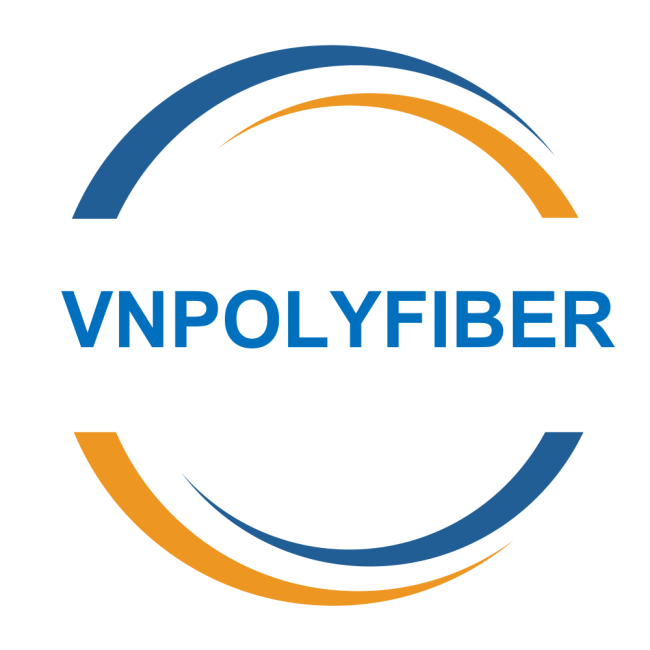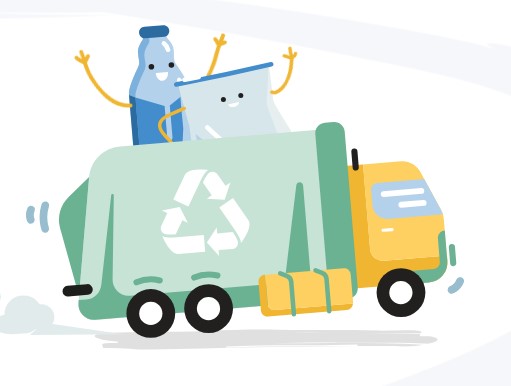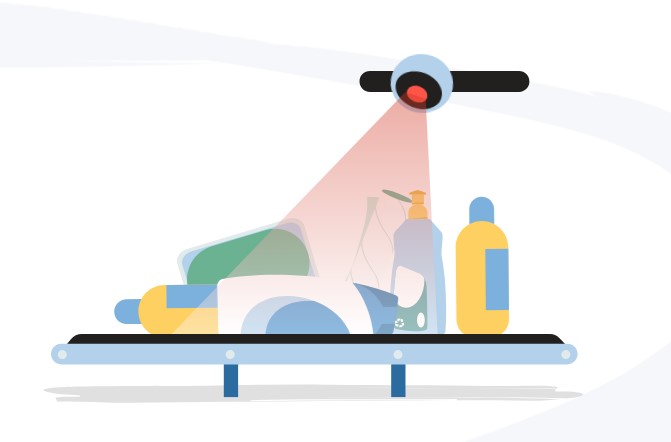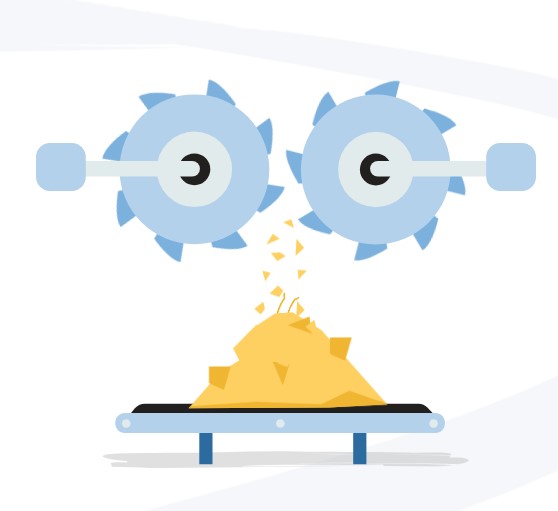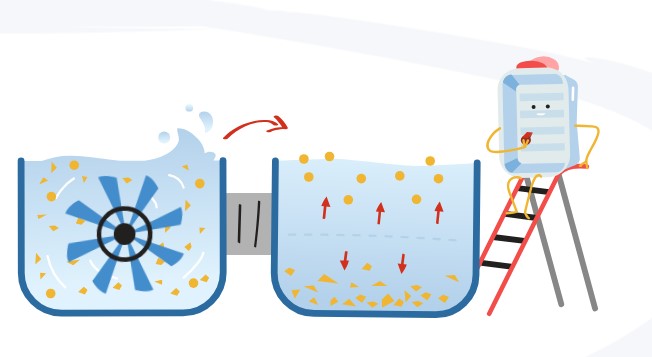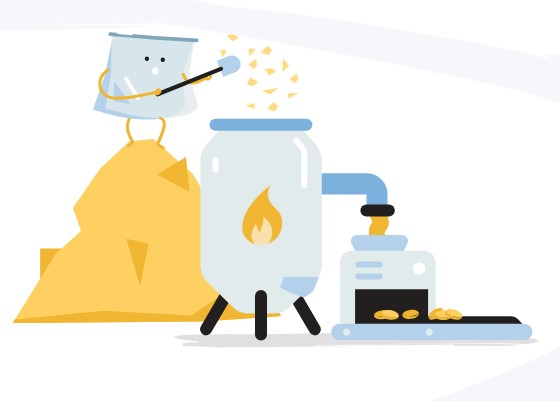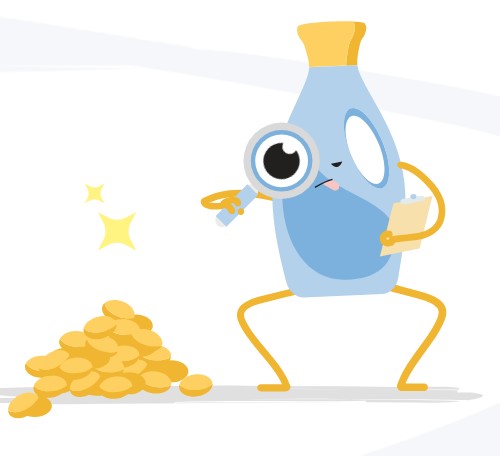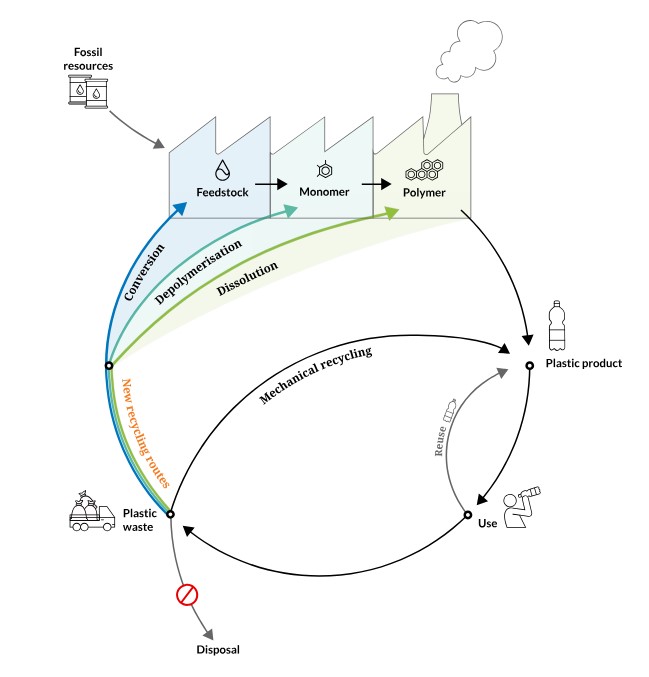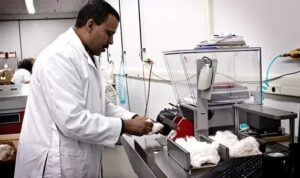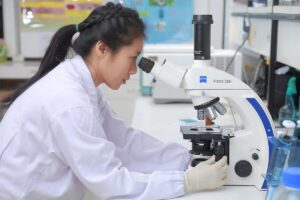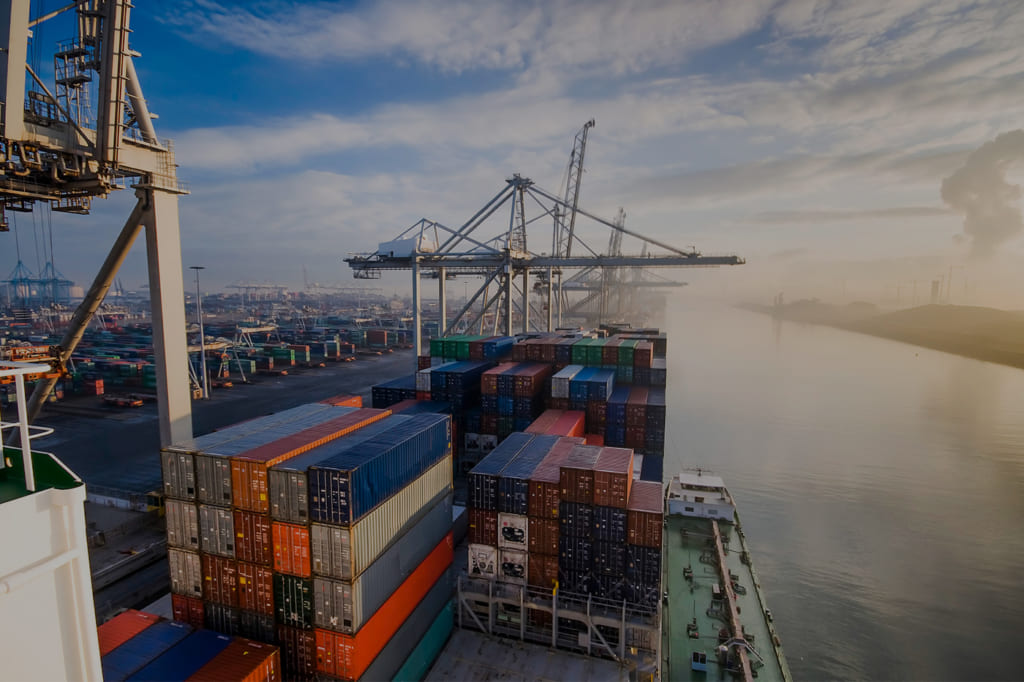What is plastic recycling?
‘Recycling’ means any recovery operation by which waste materials are reprocessed into products, materials or substances whether for the original or other purposes. It includes the reprocessing of organic material but does not include energy recovery and the reprocessing into materials that are to be used as fuels or for backfilling operations.
Article 3(17), Waste Framework Directive
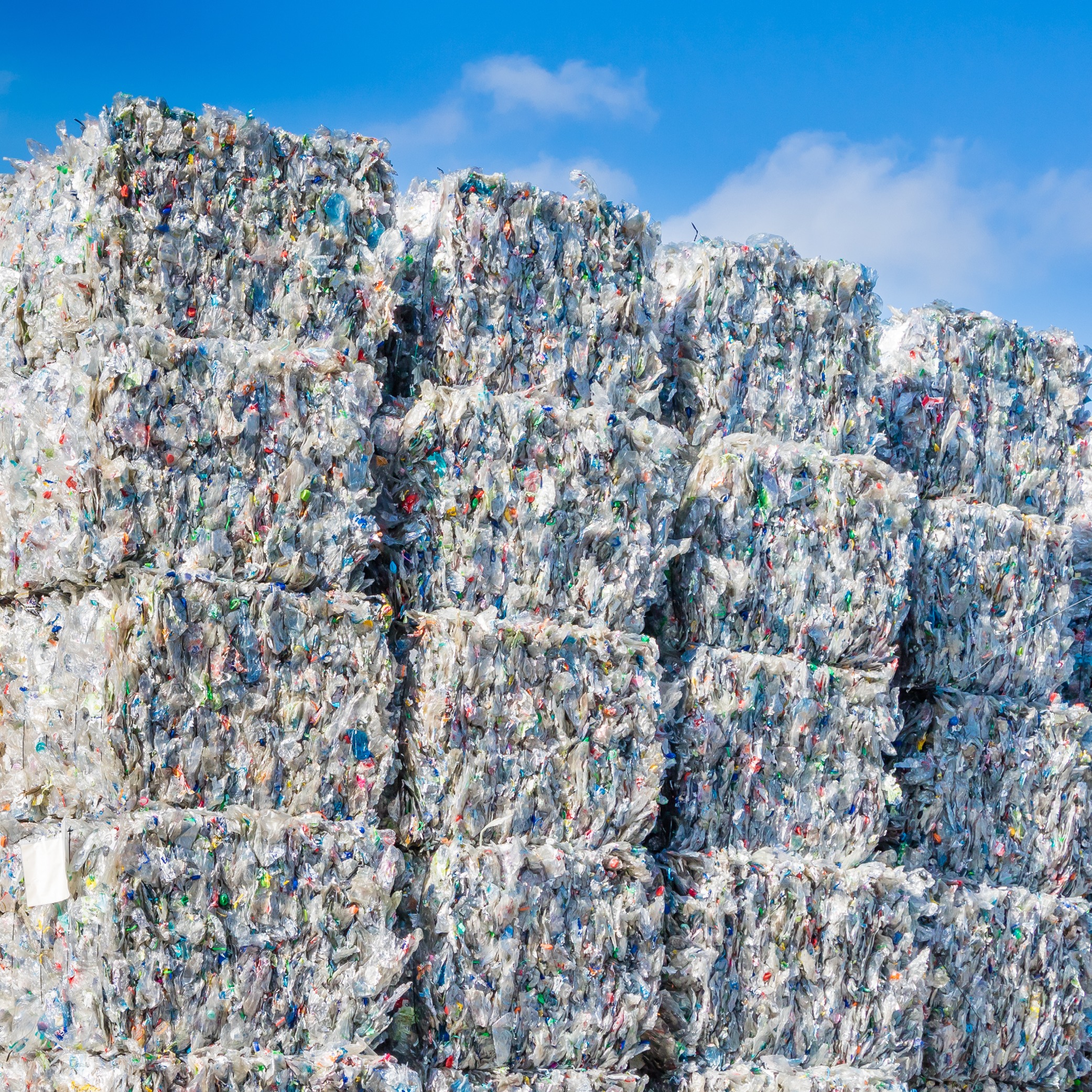
Plastic recycling is an important piece of the puzzle in solving the issue of waste management. Being among the best alternative feedstocks to virgin plastics, the use of recyclates reduces Europe’s dependency on natural resources while decreasing CO2 emissions by up to 90%.
What is recycling process?
Recycling plastic waste into new products is a piece of the puzzle in a sustainable waste management.
There are two main categories of technologies for plastic recycling:
Mechanical Recycling
During mechanical recycling, plastic waste is recycled into new material without altering the chemical structure of the polymer.
1. Collection
After a plastic product is used, it is collected – either separately, with other plastic or mixed with metal or paper.
2. Sorting
Current technologies like Near-Infra-Red (NIR), Visual Inertial System (VIS) or Artificial Intelligence (AI), sort the waste by material and product type. During this process, the plastic is placed on a conveyor belt, just like the one at a cash desk of a supermarket.
3. Shredding
Plastics are shredded into smaller pieces – called flakes – to ease reprocessing in the following stages.
4. Washing & density separation
Flakes are washed in a tank to remove unwanted materials like food residue or dirt, as in a washing machine. They are also separated by density in a float-sink tank, where each type will either float if its density is lower than that of water or sink if it’s heavier.
5. Extrusion
Plastic flakes are melted – just as wax melts – filtered to remove any unwanted materials, and turned into a material ready to be shaped into new plastic products!
6. Quality control
After a plastic product is used, it is collected – either separately, with other plastic or mixed with metal or paper.
Chemical Recycling
In chemical recycling, sorted plastic waste undergoes a process where polymers are broken down into individual building blocks. These can then be transformed back into new plastic products.
While mechanical recycling involves processing plastic waste into secondary raw materials or products without significantly altering the material’s chemical structure, chemical recycling converts polymeric waste back into secondary raw materials or recycled feedstocks, reducing the need for virgin fossil resources.This process changes the structure of the polymeric waste and transforms it into chemical building blocks, including monomers, which can then be used once more as raw materials in chemical processes. Chemical recycling includes processes such as gasification, pyrolysis, and depolymerisation.
These recycled raw materials can then be used to produce new chemicals and plastics with the same quality as those made from virgin resources. The cycle can be repeated all over again, which means that no plastic will need to end up in a landfill.
Mechanical and chemical recycling complement each other: When plastic waste is contaminated and/or mixed, it cannot be effectively processed by mechanical recycling, which is currently the only large-scale recycling technology available. Mechanical recycling is effective in tackling “pure” plastic waste such as, for example, water bottles. But when it comes to recycling plastic waste containing functional additives, as well as hard-to-recycle plastic waste, which currently largely ends up in incinerators, landfills or gets exported, chemical recycling becomes an important solution.
Together with value chain partners, the chemical industry has already successfully developed consumer products like food packaging, refrigerator parts, mattresses, carpets, and dashboards in cars. It is currently investing in chemical recycling capabilities. Major investments of commercial scale have already been announced, covering different chemical recycling technologies.
The infographic shows how chemical recycling technologies can help to move from a linear plastic economy (produce – use – dispose) to a circular one (cradle-to-cradle). Complementing mechanical recycling, ‘Dissolution’, ‘Depolymerisation’ and ‘Conversion’ are new recycling routes that can handle the plastic waste that would otherwise be disposed. They transform plastic waste into secondary raw materials that can be reintroduced at different steps of the plastic production process.
- Dissolution or physical recycling: This process involves dissolving plastic waste using solvents to extract valuable polymers.
The dissolution recycling process starts with an initial step where plastic waste is sorted and prepared for further processing. The dissolution process uses some heat and solvents to dissolve plastic into a solution of polymers and additives that it was originally made from. In the following step the additives are separated from the polymers before recovering the polymers from the solution. During the dissolution process the structure of the polymer is not altered. In a final step, new additives are added to polymers to produce the new recycled plastic.
- Depolymerisation: It is a method that breaks plastics down into their fundamental building blocks.
The depolymerisation recycling process starts with an initial step where plastic waste is sorted and prepared for further processing. The depolymerisation process – often referred to as chemolysis or solvolysis – uses different combinations of chemistry, solvents and heat to break down polymers into monomers. Monomers are the building blocks of polymers. In the following step, potential contaminants are isolated from the monomers to remove them. The monomers are then fed back into the normal plastic production processes as a secondary raw material. The plastics produced this way are of similar quality than those made from traditional fossil resources.
- Conversion: Another approach is converting plastic waste into useful raw materials. For instance, this can involve transforming plastic waste into oil and gas feedstock.
The conversion recycling process starts with mixed plastic waste being screened and prepared for further processing. The conversion process then uses heat and chemistry in a reactor to break down the plastic waste into either a liquid, oil like feedstock (pyrolysis) or gaseous feedstock (gasification). The process takes place in absence of oxygen (pyrolysis) or presence of oxygen (gasification) to ensure high-quality products. In a following step, potential contaminants are isolated and removed. The produced oil or gaseous feedstock (re)enters the chemical production chain at the refinery or cracker level as secondary raw material replacing newly extracted fossil feedstock. The resulting products are used to manufacture chemicals including plastics of similar quality than those made from traditional fossil resources.
Benefit of chemical recycling
- Chemical recycling helps to reduce landfill and the leakage of plastics into the environment Globally, chemical recycling is an important mean to fight the leakage of plastic waste into the environment, especially the littering of our oceans. Chemical recycling has an overall lower carbon footprint compared to today’s end-of-life practices of incineration and landfilling. A Cefic-Quantis LCA report found that chemical recycling (pyrolysis) of mixed plastic waste emits less CO2 than incineration of the same waste.
- Produces plastics of a similar quality to virgin feedstock: With chemical recycling plastic waste is recycled back into the production of new chemicals and plastics with a similar quality to those produced from virgin feedstock. This recycled plastic can therefore be used in high quality applications such as food packaging, refrigerator parts, and in parts used by the automobile sector.
- Reduces the use of fossil resources: Since chemically recycled plastic waste can be re-used as secondary raw materials for the production of new plastics less newly extracted fossil resources will be needed. This will make Europe less dependent on carbon imports, as carbon-rich waste streams can be used as a readily available resource.
- Reduces CO2 emissions: Chemical recycling can eliminate the emissions associated with incineration and conventional production of feedstock materials.
What are the challenges chemical recycling face?
- Supporting conditions: Chemical recycling requires an ecosystem that involves the full value chain and is supported by a policy framework that looks beyond the traditional boundaries of regions and Member States. To be successful, chemical recycling must be underpinned by a holistic enabling policy framework, an open investment environment and a competitive economic model.
- Scaling up: Chemical recycling processes (gasification, pyrolysis, and depolymerisation) exist at a demonstration level, at a smaller industrial size and require further innovation efforts before being rolled out for subsequent commercialisation (the Technology Readiness Level varies for different processes).To scale up, the following research and development needs to be considered:
- Integration into existing chemical plant operations including purification, either as feedstock or as monomer.
- Consistency of plastic waste input quality from the collection and sorting processes.
- Development of the business case for the chemical recycling of plastic waste.
- Technologies have been developed, the next step is the business case: While the technologies have already been developed, the business case for chemical recycling technologies is only in the infancy and needs be further improved. To this end, Cefic calls for enabling conditions through innovation, scale-up to demonstration, policy frameworks, creating recycling-chains and establishing clear pathways to “valorise” plastic waste that is currently incinerated, landfilled or wasted.
- Risk-sharing approach: The chemical industry continues investing in research but we also recognise that many technologies that we would like to scale up (i.e. chemical recycling, CO2 valorisation) require a risk-sharing approach. This means that more public-private partnerships with authorities to share the risk in crossing the innovation’s “valley of death” and make sure these technologies can be successfully commercialised.
